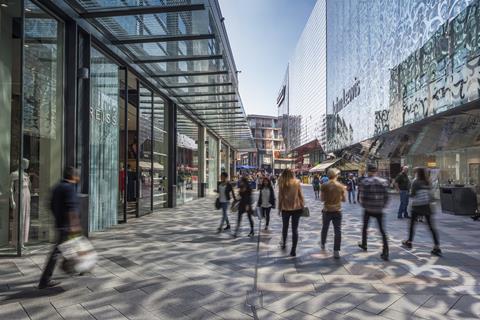A significant amount of UK secondary and tertiary retail space appears surplus to requirements, according to new Real Capital Analytics (RCA) research, spurring landlords such as Intu and Landsec to consider building residential units around existing shopping centres, and piling on pressure for space to be converted to other uses.

The findings emerged from RCA's latest survey of European real estate deal flows, which concludes that fortunes are mixed across both geographies and sectors. However, according to Tom Leahy, RCA’s senior director of EMEA Analytics, the UK stands at the 'vanguard of woes in European retail investment', with almost 20% of consumer spending now enacted online.
Germany is also flagged as a struggling retail market, although large swathes of the sector, particularly in central and southern Europe, are stll as yet relatively untouched by the e-commerce revolution. RCA data show a correlation between higher online spending and weaker deal volume.
A clear example of these diverging geographical trends is Lisbon, where over €2 bn of mostly retail assets have sold so far in 2018 – the strongest ever nine-month period for the market.
European slowdown
Elsewhere, the report finds that the slowdown in European real estate investment evident in the first half of 2018 deepened over the summer months, but concerns that the downward swing in an ageing market cycle has begun were offset by a flurry of recent deals, a strong pipeline of transactions pending and stable pricing.
Q4 has already had a 'racing start', with close to €30 bn of deals concluded in recent weeks and another €28 bn pending.
Transactions completed in July through to September totalled €49.5 bn, a 30% decline from the same period a year earlier. Although office investment fell by 36% year-on-year, that compares with a very strong 2017 for the sector and the 2018 volume is still some 20% above its 10-year average.
While in comparison, a 27% fall in the value of retail transactions over the period appears less severe, this masks a steepening gradient of descent for the only property sector submerging below its 10-year average investment volume trend-line, according to the report.
Among Europe’s top city markets, London continues to attract by far the most capital for real estate investment overall, almost double that of second-placed Paris where Q3 investment was at a nine-year low, possibly reflecting the end of the post-election economic honeymoon for President Macron.
At a country level, transaction volume in Italy in Q3 represented the slowest three months since 2012, seemingly linked to rising domestic bond yields and the stand-off between the populist governing coalition and the European Commission.
Asian players
Investment capital flows into this mixed European market picture recorded a slowdown in the third quarter, with a sharp drop of 27% in the year-to-date from non-European players. Deal flows from the three biggest sources of non-European capital have slowed substantially in 2018, with US-headquartered money down 25% year-on-year, China slipping 54% and Hong Kong falling 61%.
A notable exception to this picture were South Korean investors, who are on track for a record year in Europe. They have completed €3.4 bn in deals so far in 2018 and have another €3.9 bn in the pipeline, mostly for the London market, which these investors have re-entered in force after an absence of several years.
'Even though property remains structurally attractive, a combination of macro factors are giving investors pause, not least the prospect of a disorderly Brexit and slowing European economic growth as worries over trade and a U.S.-China showdown persist. Concerns over a loss of momentum in the global economy suggest 2019 may be a more difficult year,' concluded Leahy.










